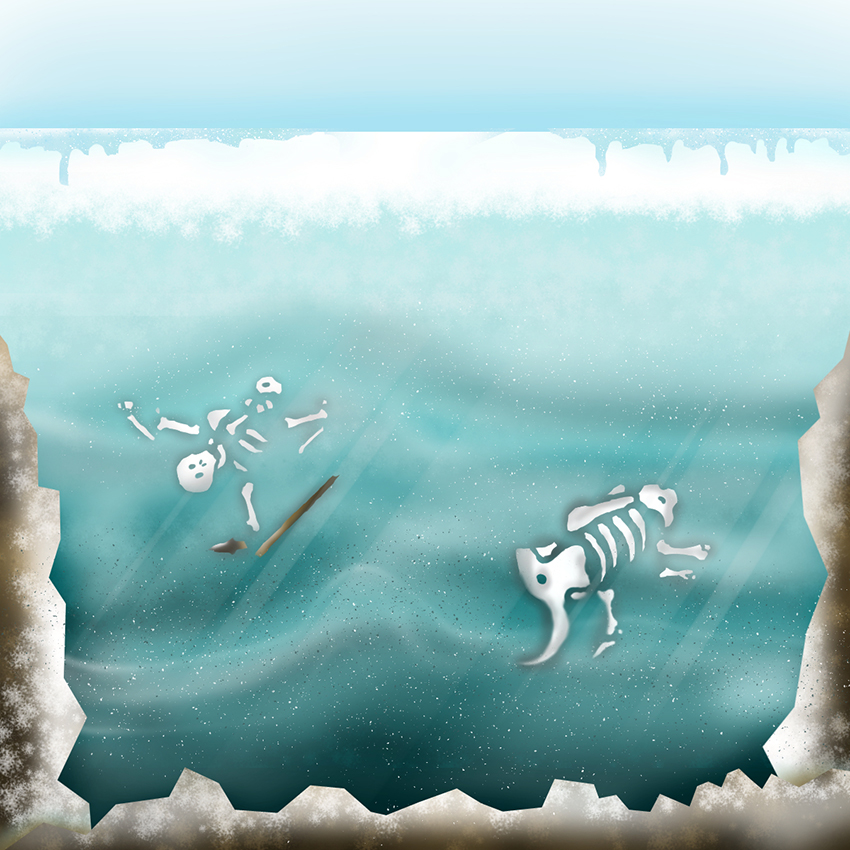UT scientists are breaking the ice with 9,000 years of glacial history.
Researchers at the UT Institute for Geophysics have begun modeling the Greenland ice sheet in order to learn more about how it has changed over time and the future impact.
Former UT glaciologist and current NASA employee, Joe MacGregor, works with large sets of data from NASA’s ice-penetrating radar.
MacGregor said this is the same radar system used in aircraft carriers to find other planes. In this context, pilots point the radar waves into the ice, where they reflect off older layers.
“Just as you would see layers of rock in a cross section on the side of the road in Wyoming or Colorado, if you were able to make a cut through the ice sheet you would also see different layers,” MacGregor said. “These layers represent part of the history of the ice sheet.”
MacGregor developed a model of Greenland that reveals changes in the ice sheet over time. This new technology allows scientists to identify and examine layers of interest.
“People knew there were these layers in the radar data and there had been a few small studies,” MacGregor said. “But no one had attempted to bring them all together and then make sense of them as we did in this paper.”
For the first time, researchers are transitioning from compiling data to analyzing models. William Colgan, professor at York University and co-author of the paper, said that studying these layers reveals the long-term effects of climate change on ice sheets.
“Being able to slice down to different layers within the ice sheet means that researchers can now examine changes in ice sheet form and flow on a variety of time scales,” Colgan said. “That means, for example, that trends in snowfall over the last 1,000 years could now be distinguished from trends over the last 10,000 years across the whole ice sheet, instead of just locations where ice cores have been drilled.”
In the recent study published in “Science,” MacGregor and his team describe the ice sheet 9,000 years ago and compare it to the current sheet. MacGregor said this comparison has revealed many long-term changes. For example, the edges of the ice sheet are thinning rapidly while the interior accumulates more mass because of increased snowfall.
The buildup of snow in the interior seems to contradict the idea of climate change melting the ice sheets, but MacGregor said the current concern is the rate at which the denser ice is being lost.
“What we expect, if global warming continues, is that you will have this dynamic thickening in the interior due to snowfall increase from rising temperatures,” MacGregor said. “So you will get more snow on the top, but you’ll be thinning and melting even more on the edges. On average, we expect the ice sheet to start losing even more mass into the ocean.”
MacGregor said that modeling of ice sheets allows observations such as these to be possible. Ginny Catania, UT geology professor and contributor to this study, says that the amount of information in these ice sheet layers has yet to be fully realized.
“We are still in the toddler phase of building these ice sheet models,” Catania said. “They don’t quite work exactly the way we want them to and we don’t exactly understand all of the processes that go into them.”
As these models improve, Colgan says that climate change researchers will be able to look at an ice sheet’s form and flow over time and make more area-specific predictions.
“Assessing ice-sheet-wide trends in ice flow or snowfall can provide hugely valuable information for computer simulations,” Colgan said. “Demonstrating that computer simulations can accurately reproduce past events is key to ensuring that they accurately simulate future events.”















